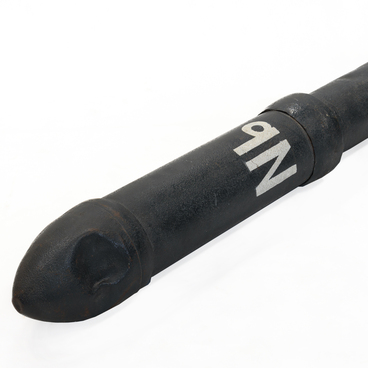Mikhail Yemelyanovich Vaytsekhovsky was born on April 2, 1896 in the village of Denisenki (Vitebsk Governorate). He participated in the First World War, and later in the Russian Civil War. After that, he continued to serve in the army. He led the 14th Caucasian Rifle Regiment, and was Assistant Commander of the 5th Rifle Regiment of the 5th Separate Caucasian Rifle Brigade. In 1939, he was discharged from service in the Red Army due to an illness. Before the Great Patriotic War, he lived with his family in the city of Voronezh in Bolnichny Lane (presently — Vaytsekhovsky Street).
Mikhail Vaytsekhovsky played a major role in the fate of Voronezh from the very beginning of the Great Patriotic War, as he was the one to establish the people’s militia of the city. The Voronezh Volunteer Communist Regiment was formed on August 21, 1941 in Pervomaisky Garden, Mikhail Vaytsekhovsky was appointed its commander.
The Booklet of Orders was one of the most important documents in the Soviet Union. It was issued both to citizens awarded with various orders, and to military formations, enterprises, organizations, and settlements. This document included the names of the orders, as well as their serial number. Initially, on December 10, 1930, there were three types of booklets approved: for one, two, and three or more orders.
Before the appearance of the booklets, the awardee was granted a special diploma. In 1939, the diplomas together with awards were replaced by the booklets and certificates for medals, which confirmed the rights to wear them and other benefits.
In addition to the full name, the booklets of order had a place for a photo card (in later versions it was abolished), in some cases it could be missing but the stamp “Valid without a photo card” would be added.
In situations where the booklet of order could not be issued by the time of awarding (first of all, this applied to the front line and active military units), a temporary certificate was provided — a sheet of paper with the dimensions of 120×140 mm (although there were exceptions). It featured the full name of the recipient, military rank, date and number of the order bestowing the award, as well as the name and serial number of the award, and a seal.
Most often the reason for the award was indicated in temporary certificates, for instance, “For exemplary execution of combat missions in the fight against the German invaders.”
Usually, permanent documents were given out after the end of the war.
Mikhail Vaytsekhovsky played a major role in the fate of Voronezh from the very beginning of the Great Patriotic War, as he was the one to establish the people’s militia of the city. The Voronezh Volunteer Communist Regiment was formed on August 21, 1941 in Pervomaisky Garden, Mikhail Vaytsekhovsky was appointed its commander.
The Booklet of Orders was one of the most important documents in the Soviet Union. It was issued both to citizens awarded with various orders, and to military formations, enterprises, organizations, and settlements. This document included the names of the orders, as well as their serial number. Initially, on December 10, 1930, there were three types of booklets approved: for one, two, and three or more orders.
Before the appearance of the booklets, the awardee was granted a special diploma. In 1939, the diplomas together with awards were replaced by the booklets and certificates for medals, which confirmed the rights to wear them and other benefits.
In addition to the full name, the booklets of order had a place for a photo card (in later versions it was abolished), in some cases it could be missing but the stamp “Valid without a photo card” would be added.
In situations where the booklet of order could not be issued by the time of awarding (first of all, this applied to the front line and active military units), a temporary certificate was provided — a sheet of paper with the dimensions of 120×140 mm (although there were exceptions). It featured the full name of the recipient, military rank, date and number of the order bestowing the award, as well as the name and serial number of the award, and a seal.
Most often the reason for the award was indicated in temporary certificates, for instance, “For exemplary execution of combat missions in the fight against the German invaders.”
Usually, permanent documents were given out after the end of the war.




